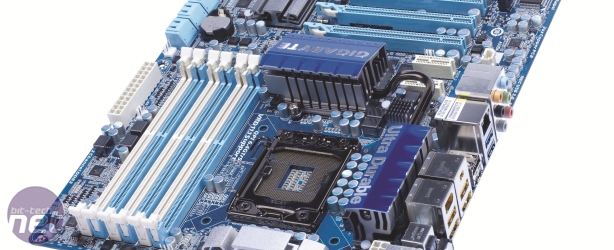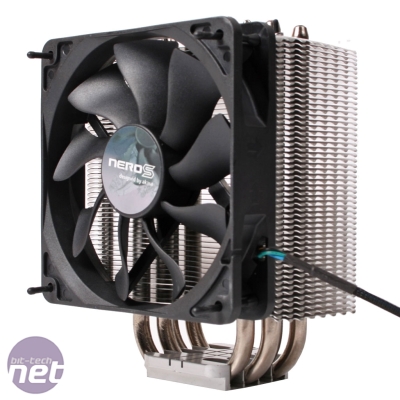PC Hardware Buyer's Guide May 2010
May 7, 2010 | 09:18

Premium Player May 2010
When only the best will do, there’s a great choice of hardware out there to cater for your needs, providing premium performance for a premium price tag. However, even with a high budget, we’re not out to waste money - building a top-end system isn’t as simple as just buying the most expensive components out there and slinging them all together. If you’ve just bought that 24in or 30in monitor, surround sound speaker kit and nice comfy leather chair with footrest (or sub as it's also known) and are looking for some kick-ass performance that won't wait for anyone, this is what we consider the very best hardware at the moment.| Premium Player | |||
| Product | UK Price (inc VAT) | US Price (ex tax) | |
| CPU | 2.8GHz Intel Core i7-930 | £230 | $295 |
| Motherboard | Gigabyte GA-X58A-UD3R | £155 | $210 |
| Memory | 6GB 1,600MHz DDR3 | £145 | $200 |
| Graphics Card | ATI Radeon HD 5870 | £320 | $400 |
| PSU | Seasonic X-750 | £140 | $170 |
| CPU Cooler (UK) | Akasa Nero S | £36 | NA |
| CPU Cooler (US) | Titan Fenrir | (£30) | $50 |
| Case | Cooler Master ATCS 840 | £165 | NA |
| Optical drive | SATA DVD-RW | £15 | $20 |
| Storage (HDD) | 1TB Samsung SpinPoint F3 | £60 | $90 |
| Storage (SSD) | Corsair Nova 128GB | £295 | $335 |
| Sound Card | Asus Xonar DX | £55 | $90 |
| Overall Price: | £1,616 | $1,840 | |
As usual when building PCs from scratch, we’ll start with the CPU choice. This is an even more apt starting point than usual this month, as AMD has released a range of six-core Phenom II X6 CPUs, while Intel has its quad-core (eight-thread) Core i7 series and its ludicrous six-core (12-thread) Core i7-980X Extreme Edition. The reviews show that the AMD Phenom X6 II 1090T Black Edition just doesn't cut it against the Core i7-930 (let alone the i7-980X) unless you’re doing some highly multi-threaded work in specific applications. For bags of speed in pretty much every department and use, the Core i7-930 is the better bet for around £250.
While we’d all like to have a i7-980X in our PC, the extra four cores over the i7-930 only help in certain applications – again, heavily multithreaded semi-pro types of use. So, while the CPU is certainly desirable, it’s not actually all that useful for many of us, making the £800-odd asking price too large to swallow.

With the CPU choice settled, we move onto which motherboard to buy. We found a gem of a board in the Gigabyte GA-X58A-UD3R. At around £155, this ATX-sized board is hugely overclockable, has a clean layout and an amazing ten SATA ports (two of which are SATA 6Gbps-compatible). As we wrote at the end of the review: "[With] its plethora of controllers and slots, the GA-X58A-UD3R is a great performer and a fantastic overclocker [it’s] a fantastic bargain, leaving you with more cash to spend on the CPU, graphics card and cooling hardware."
With that in mind, we equipped our Premium Player rig with a Radeon HD 5870 graphics card. We could have opted for the epically fast Radeon HD 5970, which held off Nvidia’s GeForce GTX 480 so well. However, there’s not much stock of the HD 5970 to be found, and where there is, the card is £550. Add to this the fact that as a multi-GPU card, its performance is dependent on driver updates to add CrossFire support, and we wanted to stick with the HD 5870.

You can reasonably make the argument that the GeForce GTX 480 is the fastest single-GPU graphics card going, but the heat, power draw and noise of the card are huge turn-offs for us. We prefer our barbeques outdoors, thanks muchly.
When it comes to LGA1366, we’d always prefer 6GB of memory over 3GB if possible, so we’ve gone for 6GB of 1,600MHz DDR3 RAM. The relatively high frequency will give us a bit more headroom when it comes to overclocking. For example, if we wanted to aim for a 4GHz overclock we’d use a QPI of 191MHz (as 191 x 21 = 4,011). If we’d opted for 1,333MHz memory, we’d have to use the 6x memory strap with this QPI, which would give us a memory frequency of 1,146MHz, which is a touch slow. With the 1,600MHz memory, we can safely use the 8x memory strap and have our memory run at a more healthy 1,528MHz. We wouldn’t recommend overclocking 1,333MHz memory to 1,528MHz for everyday use unless you really know your DRAM.
 To keep the CPU cool, we’ve chosen the Akasa Nero S as it cools slightly better than the Titan Fenrir and is a touch quieter.
To keep the CPU cool, we’ve chosen the Akasa Nero S as it cools slightly better than the Titan Fenrir and is a touch quieter.However, the Fenrir is still worth considering as it’s £6 cheaper and is hardly loud itself. The Nero S also has very variable cooling abilities, depending on the socket (and Akasa’s mount) so it’s only worth considering for LGA1366 systems.
We’ve stuck with the Cooler Master ATCS 840 as our premium case, as it’s minimalist looks and reasonable price make it a bargain. However, you could save some cash by opting for a Fractal Design R2, or really splash out on a non-standard case such as the Lian Li Tyr PC-X1000.
For storage, we’ve gone for a single 1TB Samsung SpinPoint F3 hard disk and a 128GB Corsair Nova SSD. We’d install Windows, games and slow-loading applications to this disk and everything else to the Samsung hard disk.
If you haven't got a copy already, you might want to factor in a copy of Windows 7 - if you're confident that you won't be upgrading much, then an OEM copy should be fine, but serial upgraders need the pricier retail version.
We’ve also added an Asus Xonar DX sound card to avoid conflicts with the Realtek audio codec of the motherboard and enhance the sound generally. To round things off, there’s a cheap SATA DVD drive (we’ll save the Blu-ray drive for our Home Theatre PC) and an amazingly efficient Seasonic X-750 750W PSU to power everything.

MSI MPG Velox 100R Chassis Review
October 14 2021 | 15:04








Want to comment? Please log in.